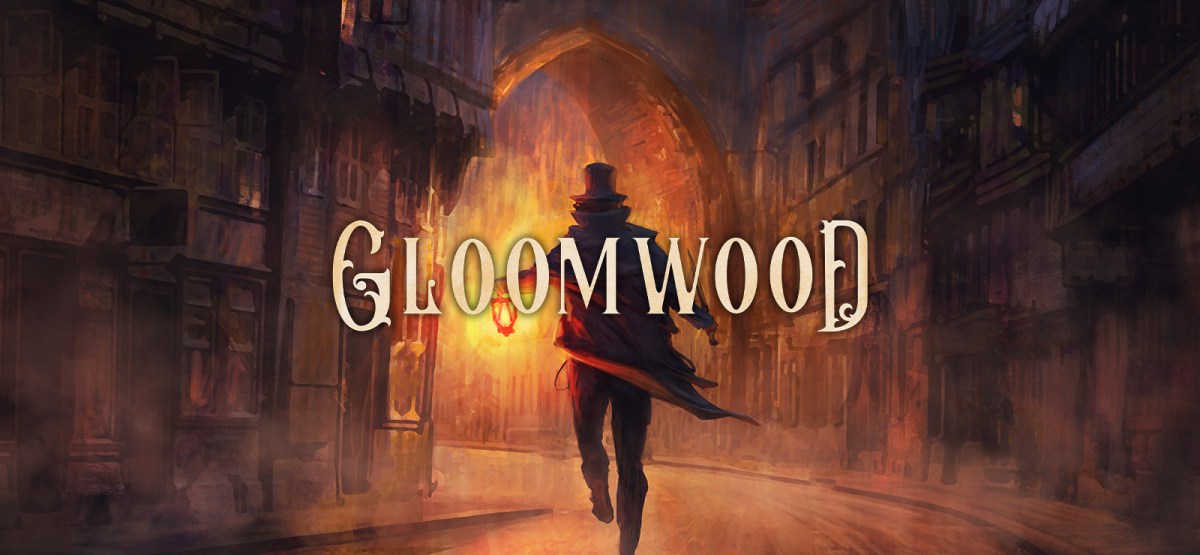The game is Gloomwood. Two guards stand near an explosive barrel, their backs to me. One wields an axe – a high-damage weapon, but with a slow and predictable rhythm that’s easy to dodge. The other carries a rifle. The rifleman is more dangerous, so I need to get rid of him first. I could attempt a backstab. The charge time on my trusty cane sword is slow, but it’s a guaranteed one-hit kill once the blade glints to indicate the charge is ready. However, that will require an engagement with the axeman, and the commotion might draw more guards. Popping the chamber on my shotgun shows that it’s out of bullets, and my revolver doesn’t deal sufficient damage or reload quickly enough to stop a crowd. I could pull a glass bottle from my briefcase-shaped grid-based inventory and throw it as a distraction, but that would probably distract both guards rather than just the one I need.
I shoot the barrel. The explosion scatters blood and body parts and alerts everyone in the vicinity to my location. I scurry into a dark room and try to wait it out until the guards stop their investigation and resume their regular patrol routes. All well and good, except that I can hear them heading my way. I look around for a vent or a way to get into the rafters, but I finish chopped and shot to pieces before I realize there aren’t any.
Even in the current early access build, with only around four hours of content available and the steampunk city featured in last year’s demo left tantalizingly on the horizon, Gloomwood is packed with encounters like this — short scenarios that prioritize stealth but offer the player a set of emergent gameplay options in the best immersive sim traditions. Indeed, Gloomwood explicitly advertises itself as Thief with guns (try “thiefwithguns.com” in the URL bar).

Despite this branding, Gloomwood smuggles in a quiet subversion of immersive sims that is closer in ambition to Arkane Studios’ Deathloop than its Looking Glass ancestors. With the exception of Deathloop, which employed a roguelike structure of multiple runs through the same levels, every major immersive sim has relied on a quicksave system that allows the player to save their progress at almost any time.
It’s a double-edged sword. On one hand, it enables the player to experiment without fear of losing too much progress or making an irrevocably silly decision. I would be able to reload the scenario above, for example, as many times as I’d like to test each of my options. On the other hand, it facilitates save-scumming and breaks immersion. I frequently resorted to save-scumming in Thief and Dishonored to complete levels without being noticed. Arguably, the option to quicksave may even necessitate save-scumming in some cases — I challenge the average player to beat the last few levels of System Shock 2 on Impossible without it.
Instead of quicksaving, Gloomwood features a save point mechanic not dissimilar to in Dark Souls or Bloodborne. The player may save at any time, but only at one of the game’s sparsely placed phonographs. Some levels, such as the opening fishery, loop back to the same phonograph as they are gradually explored and unlocked by the player. Other levels are more linear, but in all cases it’s possible to go for long stretches of time before encountering a save point.

This introduces its own dilemma. Coupled with Gloomwood’s scarce resources, it makes for some tense gameplay. The encounter described above was nerve-wracking not because it’s particularly complex or difficult, but because it was far away from a save point and I couldn’t help but weigh my options against the risk of getting it wrong. Gloomwood is a masterclass in forcing the player into a small but constantly evolving set of cost-benefit decisions: the benefit of shooting a barrel versus the risk of attracting guards, the benefit of an easy kill versus the risk of spending ammo too early, the attraction of possible gear versus the unknown dangers that protect it, and so on. These decisions have weight because they can’t be reversed with a quickload.
The philosophy is similar to that of Deathloop in that it forces players to try to perfect their run towards a given objective rather than enable them to inch incrementally towards the objective via a series of saves. The lack of quickload interruptions also helps Gloomwood maintain its sense of pace.
That is — until things go wrong. Then Gloomwood can feel like it has ground to a halt. You may be sent not to the start of the current encounter, but potentially to the start of an entire level. The scenario described above turns from an intriguing puzzle box of player choices to a frustrating obstacle that has to be overcome to see the next bit of the game.
Nonetheless, the trade-off is worth it, not least because Gloomwood’s early access roadmap promises to add quicksaving and customizable difficulty. That way you get the best of both systems — gameplay designed around long runs without the safety net of a quicksave and also the ability to switch on that safety net if needed.






Published: Sep 30, 2022 12:41 pm